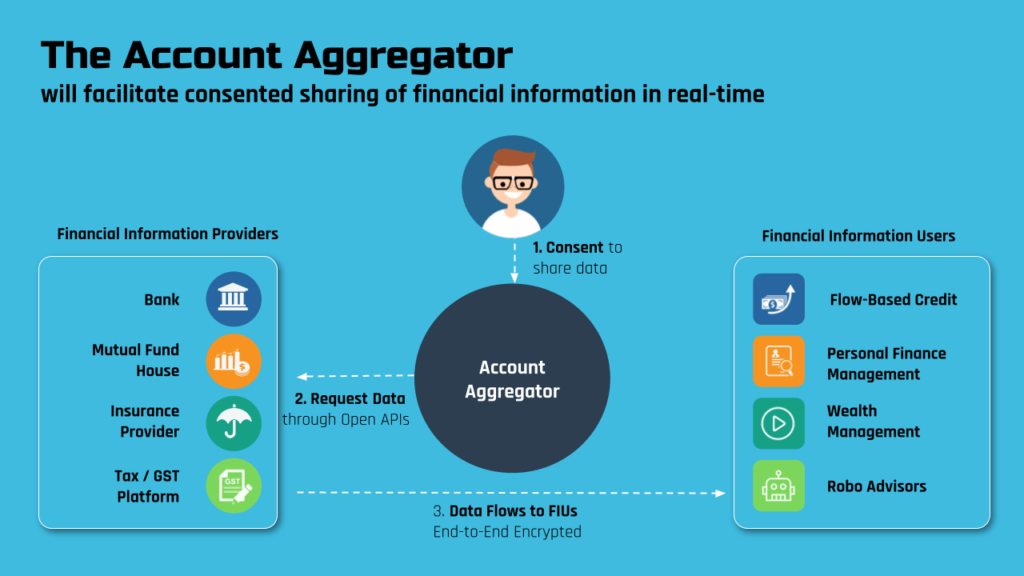I’ve seen that the best innovation brought by the Government of India in the recent decade is the India Stack. The innovative technology environment that brings everything under one umbrella.
IndiaStack is helping our country become the most developed country that can manage Identity, Data and payments in real-time seamlessly with e-Auth, e-Sign, e-KYC, QR, Digilocker, UPI & e-Aadhar etc.
I had heard about Visa and Mastercard and how they play as intermediaries between banks and users to process the transaction. But after knowing about NPCI, it blew my mind. It’s such a great innovation in the fintech world in India through UPI which is leading our country’s payment infrastructure, a non-profit organisation owned and operated by banks, with up to 200+ banks connected to this network as of today.
The Jio revolution and smartphone boom have led to the growth of digital payment numbers in this country significantly.
Now coming to the last piece of the puzzle Data, Seminal pieces of legislation like the General Data Protection Regulation (GDPR) in the European Union, Open Banking in the UK, and the California Consumer Privacy Bill in the United States have sought to empower individual citizens with agency and control over their personal data. DEPA (Data empowerment and protection architecture) represents India’s attempt at creating a secure consent-based data-sharing framework’ to accelerate the financial inclusion of its citizens.
The three main pillars of DEPA are:
- 1. A landmark Personal Data Protection Bill which, for the first time ever, gives Indian citizens a number of rights pertaining to their data.
- An electronic (QR) consent artefact, which establishes a standardised and programmable digital template for capturing user consent to share their personal data with third parties
- A new category of regulated entities is known as ‘consent managers’ (in the Financial Services sector these will be known as Account Aggregators). These AA’s are tasked with playing the role of traffic cops in a typical data value chain. They provide an interface to facilitate the ‘easy sharing and consumption of data from various entities with user consent’.

Open Networks:
the driving vision of India Stack is of open networks. The idea behind open networks is to establish a level playing field for members of a digital ecosystem.
As of now, there are two open network systems are there in India:
- OCEN – India’s Open Credit Enablement Network – the flow of credit between borrowers, lenders, and credit distributors is codified under a common set of standards. it supports the easy transmission of credit to consumers and businesses
- National Digital Health Mission – An open network for consumers to securely share their health data with an ecosystem of healthcare apps and providers.
FAQs
Who owns and maintains India Stack?
India Stack is the name used to describe a collection of disparate technology products and frameworks. The components of this collection are owned and maintained by different agencies. Aadhaar products such as e-auth and e-KYC are owned by the Unique ID Authority of India.
eSign is a technology specification which is maintained by the Ministry of Communications and Information Technology.
Digilocker is owned by the Ministry of Electronics and Information Technology.
UPI is owned by the National Payments Corporation of India.
The Account Aggregator framework is regulated by RBI and its technology standards and owned by ReBIT.
Can India stack be applied in other countries?
The principles, technologies, and functionality of India Stack can be applied in any country. None of the systems that comprise India Stack require any proprietary technology or intellectual property that would preclude their implementation in any other country.
How can interested individuals get involved in India Stack?
Individuals interested in contributing to or working on India Stack may volunteer with iSPIRT, a non-profit think tank that champions digital public goods and maintains this website. More information may be found at ispirt.in.
How can you start building on India Stack?
The answer to this question depends on which component of India Stack is of interest. Depending on the answer, the relevant government agency or institution owning that particular product will be able to provide access to APIs, sandboxes, and other pieces needed to start building. Alternatively, interested parties may elect to use the APIs are offered by intermediaries. Popular intermediaries offering APIs and sandboxes on top of India Stack products include Digio, Karza, Signzy, OnGrid and many others.

